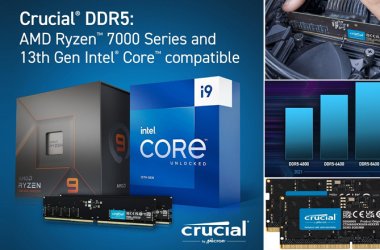 Micron has released its first entry-level solid state drive (SSD) aimed at being used as a boot drive in servers or for I/O intensive read applications, such as video streaming in cloud computing environments, the company said.
Micron has released its first entry-level solid state drive (SSD) aimed at being used as a boot drive in servers or for I/O intensive read applications, such as video streaming in cloud computing environments, the company said.
The new entry-level P400e comes in a 2.5-in. wide, .27-in. (7mm) high form factor, according to representatives. Its release follows the shipment last month of Micron’s highest-end flash drive, the PCIe-based P320h, the company said. The P400e SSD completes Micron’s data centre product lineup that includes the mid-tier P300 SSD, it added.
Kevin Dibelius, senior product marketing manager for Micron, said the company chose the slimmest possible form factor for the SSD to meet the demand of pizza box-style blade server environments. “The drive can also be embedded in routers and switches and can be used in servers in cloud infrastructures that service video on demand, web search applications and cloud infrastructures,” Dibelius said.
In comparison to Micron’s P300 drive, which uses single-level cell (SLC) NAND, the P400e uses consumer-grade multi-level cell NAND, which allows it to achieve a price of around $2 per gigabyte of capacity, Micron said.
The P400e comes with a 6Gbps serial ATA (SATA) interface and comes in capacities of 50GB, 100GB, 200GB and 400GB with a maximum sequential read/write rate of 350MBps and 140MBps, respectively, the company said. Using 4KB-page sizes, the P400e can achieve up to 50,000 I/Os per second (IOPS) for reads and 7,500 write IOPS. The 50GB version of the SSD has a slower write rate of 100MBps or 7,000 IOPS, representatives pointed out.
In comparison, Micron’s P300 SSD can achieve a read speed of up to 360MBps and a write speed of up to 275MBps, Micron said.
Micron used its thinnest 25-nanometer circuitry for the P400e, which it said allowed it to keep the price point low, representatives said.
Regarding endurance, or longevity, Micron said its P400e can withstand 95GB worth of write data per day for five years, or a total of 175TB of data written and erased. That compares with another SSD released this week from Israeli start-up Anobit .
Anobit’s Genesis 2 also uses consumer-grade MLC flash in its 2.5-in. SSD, but it has a maximum sequential read/write rate of 540MBps and 510MBps, respectively.
The Genesis 2’s endurance rate is 50,000 write-erase cycles, or roughly 10 to 15 times that of typical consumer-based NAND flash, according to the company. Anobit said it guarantees a write endurance of 10 times the SSD capacity per day for five years, or 7,300TBs (7.3 petabytes) for a 400GB model drive.
However, Anobit would not release pricing for its drive, so it could be considerably higher priced than Micron’s P400e, which is more economical at $100.
“Our customers have been asking for an affordable, reliable, performance-driven, solid state storage option for [direct-attached storage]-level applications, and the P400e drive delivers on those key design requirements,” said Gary Gentry, GM of the enterprise SSD division of Micron’s NAND Solutions Group.





